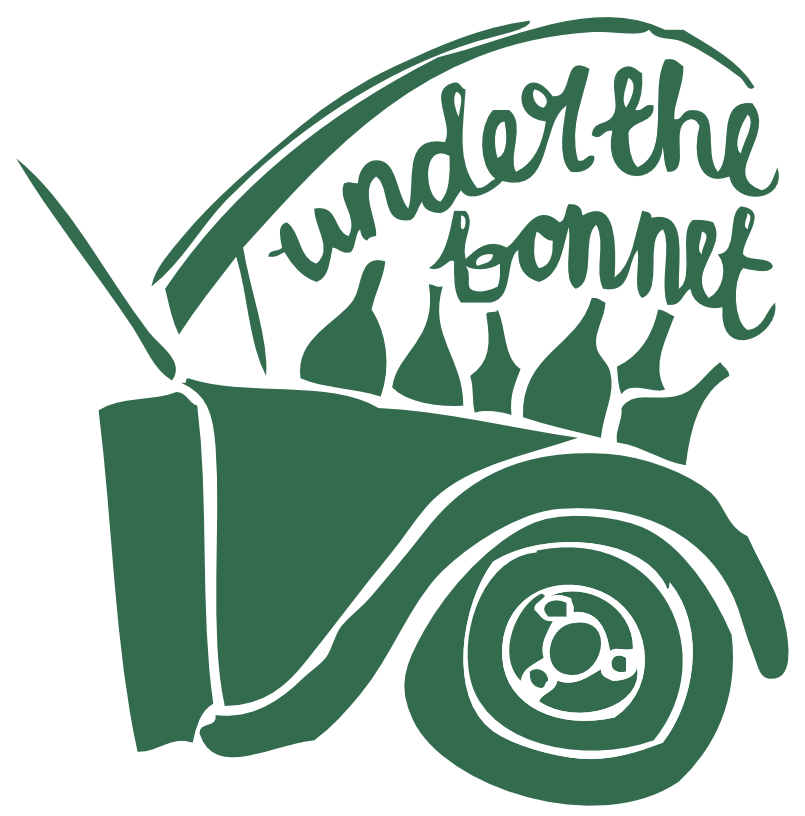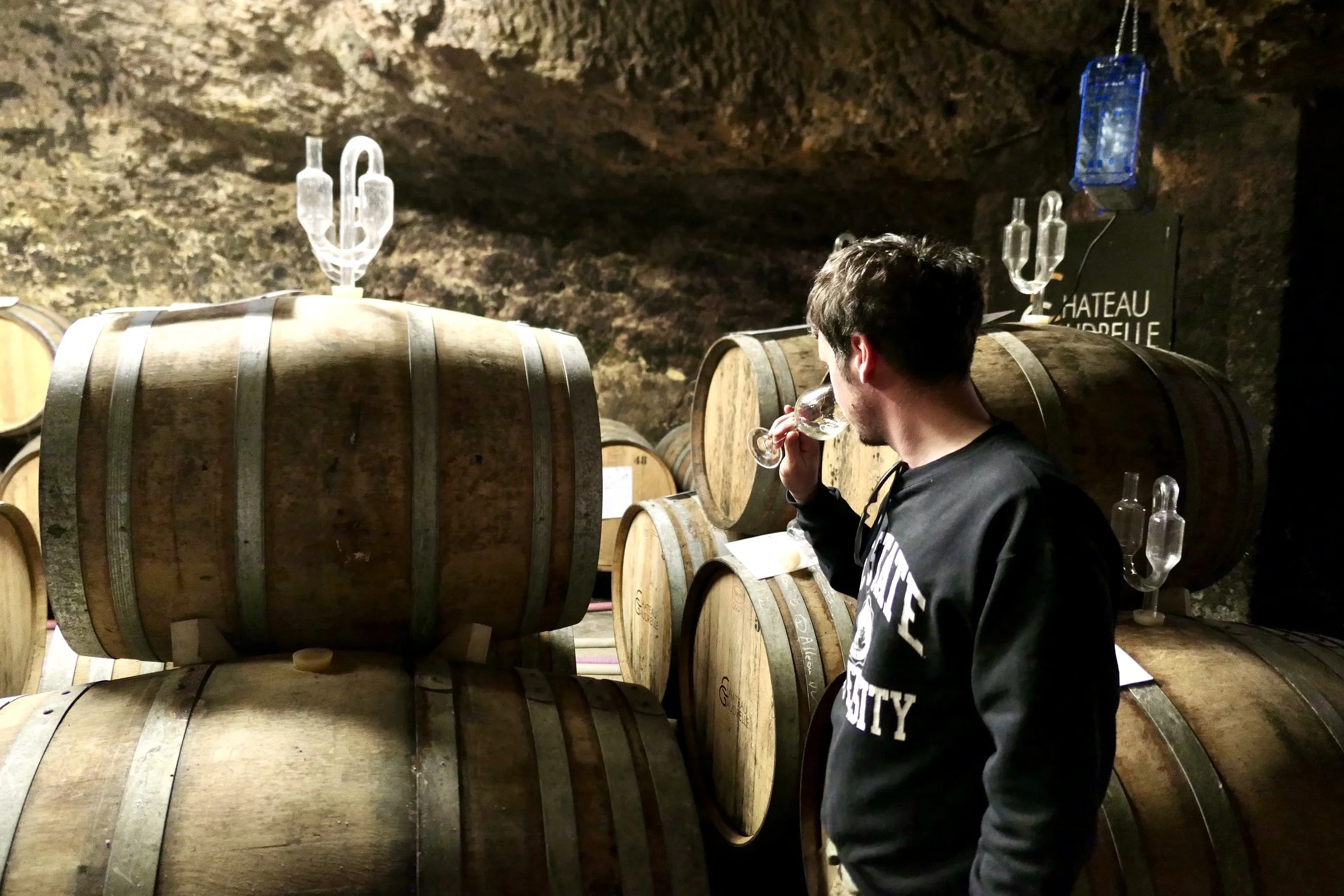CHATEAU GAUDRELLE - EMILE PASQUIER
FRANCE, LOIRE, VOUVRAY
Back in 2022, Emile Pasquier returned to Vouvray to take over at Château Gaudrelle, the 16-hectare domaine his father Eric had been running since 2008. Emile hadn't initially intended to move into winemaking but after a life-changing tasting in the cellar of Nicolas Renard and trying endless natural wines at his older brother's restaurant in Tours, a spark was lit. Moving to the Jura to study winemaking,his eyes were opened further to the possibilities afforded to him, and he returned home ready to express his impression of the Vouvray terroir.
The vines sit on the Vouvray plateau, around 100m above sea level, on flint and clay soils over limestone. Below them, a 50m chalk cliff drops to the banks of the Loire, where the winery and cellars are cut directly into the rock. Close to the cliff edge, topsoil is almost nonexistent for the vines; inland, it deepens to several metres of clay. The site spans 16 hectares, all hand-harvested, with careful sorting in both the vineyard and cellar. Currently in biodynamic conversion, Demeter certification is expected in 2026.
Planted mainly to Chenin Blanc, Emile is working across a range of styles to paint a full picture of Vouvray and its strengths. Some wines are fresh and snappy, bottled early from stainless steel, stone jars and concrete eggs. Others from older vines, or riper parcels, he prefers to keep long in barrel. We're seeing the first releases of some of these, but many will rest for up to 10 years. Everything is indigenous fermentation; some wines are bottled with no additions, others see a touch of sulphur at bottling only. Drawing on his time in the Jura as a stylistic reference point, Emile is nevertheless seeking a local vernacular that balances structure and drinkability.
Farming has been organic for over a decade, and increasingly shaped by biodynamic thinking. Roughly 15% of work is now also done by horse, and in Emile’s words: “everything changed” with the move to biodynamic agriculture. It hasn't been easy and in 2022 - their first year practising biodynamics, they suffered huge losses thanks to climate change. "This was hard for business, and hard for me but - everything in the winery was more intense, more acid, more fruit, so much more fun to work with. The wines were alive, and I knew it was the right decision." As the soils and vines found new life, resilience returned, and production has now steadied.
These are keen-eyed wines of both tension and generosity from a young grower working incredibly hard to capture the best of his terroir.
AVAILABLE NOW
SPARKLING
2022 - Notre Methode - Chenin Blanc Traditional method sparkling. A blend from two flint-heavy plots - one shallow, one deeper - harvested by hand. Fermented in steel, aged 9 months on light lees, then bottled in June 2023 for secondary fermentation using selected yeast. Aged for 2 years in bottle before release. 15mg/l sulphur at bottling.
For Emile, the Chenin on Flint is more aromatic and crisp compared to the wines on limestone.
2021 - Extra Brut - Chenin Blanc
Traditional method sparkling. Always hand harvested from one limestone parcel near the Vouvray cliffside, very little topsoil here, and much drier - the first 'grand-cru' site in Vouvray.
Vines aged between 60 to 15 years old, occasionally blended with a splash from flint plots to lift freshness. Fermented and aged 9 months in 15 to 25-year-old barrels on the lees, then aged 2 years in bottle. Richer lees profile than Notre Méthode.
WHITE
2023 - Turonien Unf - Chenin Blanc
Hand harvested from parcels mostly on deeper clay and flint soils, from 25–35-year-old vines with lots of energy & vigour. Pressed directly and fermented in stainless steel, bottled unfiltered in early (February) to preserve freshness.
"This is a wine all about freshness, the vines are less concentrated and produce a fruiter wine, so we aim for something easy & refreshing rather than the parcels picked for the longer-ageing wines. It's about primary fruit instead of autolysis."
2023 - Le Sec - Chenin Blanc
Hand harvested from the same 'Grand Cru' limestone plot as Extra Brut, mainly from the 60-year-old vines, with some younger vines. A site very close to the cliff, much drier, less soil here and producing more concentrated wines.
Pressed directly to barrels, fermented partly in 20% new oak and the rest old. Aged 12 months on heavy lees before bottling.
2020 - Oxy - Chenin Blanc
An experiment inspired by Vin Jaune that Emile produced back home whilst studying in the Jura. Hand-harvested from both the flint & limestone soils, Emile sourced one barrel from the cellar that was too powerful and wasn't bringing balance to the other wines, an outlier that was interesting enough to see how it would develop.
Fermented dry in barrel, then decanted off its lees. The clear wine was seeded with live yeast from a Domaine Macle Vin Jaune barrel, and aged sous voile in Burgundy barrel outdoors for three years. No sulphur added; protected by its 17% alcohol and oxidative strength.
"I was studying in the Jura, and as the final experiment you need to have in to finish your diploma, I wanted to examine what components make Vin Jaune so special - Is it the yeast? The climate, or the Savagnin itself? I see a lot of similarities between Chenin & Savagnin - obviously our climate is very different - so I was keen to take this at the start of my experiment."
"We had one barrel at home that was too strong to blend, it was knocking other wines out of balance when we tried it, so I asked if I could use it for this, it seemed perfect. I was lucky to be friendly with Domaine Macle- who have been producing Vin Jaune for 300 years - and they gave me some live yeast using sediment from one of their Vin Jaune barrels."
I added this to my wine and left it outside for three years, where the temperature and humidity would vary as much as possible. This is the idea in the Jura, and it's these strong fluctuations in humidity and temperature that contribute to the character. The more variation you have, the more oxidation impacts the wine. The colder it gets, the more oxygen the wine breathes. The idea was to make something really strong, really powerful. We learnt so much from it. Now I aim for more balance, but that wine was something I really wanted to do."





